Home / Resources
Resources
Discover a Wealth of BPM Knowledge and Expertise at BPMInstitute.org!

Difficult People in the Virtual World: Part 2 of The Virtual Team Facilitator
Difficult people can disrupt any meeting, and we all know their frequent styles and behaviors from face-to-face meetings. These are people such as the Heavy Talker, the Technical Expert, and the Know It All. Below are some more difficult people that apply in the virtual meeting. (Of course many of these roles apply in the face-to-face meeting as well.)
The Late Comer. You need to have the virtual tool set up at least 15 minutes ahead for a long meeting (over 2 hours) and 10 minutes before for a shorter meeting. Welcome people as they come on. Then at the start time, tell everyone you will start now or wait for 2 more minutes, and then start. When new people come in, welcome them and move along.

First and Last: A Tale of Two Enterprises
Far too often these essays are motivated by an observation of, or conversation with, an organization that has gotten itself into some trouble. Their pain becomes a springboard to discuss how things should be done in the world of decision management and provides an unfortunately steady stream of topics for forums like this. That said I am quite pleased to be able to report some generally positive recent experiences with Enterprises that are making great strides as they embrace business rules and decision management. We will use these as exemplars that other similar organizations might look to as they plot their decision management.

Business Architecture & the Role of the CIO
I get a chance to work with CIOs in various capacities that usually involve major business challenges their organizations are facing and how IT can collaborate with business to address those challenges. These discussions are generally a precursor or follow-up to a strategic assessment, which tends to surface the expected technological challenges along with a few surprises. The surprise is not that IT has layer upon layer of fragmented, heavily redundant application and data architectures built on aging technology. This is unfortunately the norm. The surprise lies in why these problems keep multiplying and attempts to address them often turn into the next failed project. The fact is that issue analysis, problem definition, planning and funding all begin with the business and more often than not, these concerns lie behind a shroud of organizational siloes, fragmented customer perspectives and myriad business dialects.
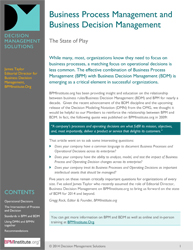
Business Process Management and Business Decision Management: State of Play
While many, most, organizations know they need to focus on business processes, a matching focus on operational decisions is less common. The effective combination of Business Process Management (BPM) with Business Decision Management (BDM) is emerging as a critical element in successful organizations.
The Intersection of Process and Decision
Business Process Management is well established in organizations of every size. Many, most, organizations identify, document, model, automate and manage their business processes. Many of these organizations have adopted a technology stack, a Business Process Management System, to support their BPM work. Despite the importance of operational decisions, most do not yet similarly manage business decisions. This is changing as more organizations adopt Business Decision Management as well as Business Process Management so they can work at the intersection.

5 Keys to a Successful Mobile Content Strategy
Most companies, from high-tech firms to heavy equipment manufacturers, are wrestling with effectively delivering content to their customers’ and employees’ smart phones and tablets.
From product manuals and training materials, to catalogues, employee handbooks, and annual reports, most organizations suffice with PDF files, the mobile equivalent of a static document or web page.
Adopting a mobile-friendly content strategy enables a myriad of benefits that go far beyond delivering the right content to the right device at the right time—including collaboration via social networking platforms, multimedia (audio and video) enhancements, interactivity (quizzes and exercises to test mastery of concepts), annotations to content, and much more.

Driving Improvement With Management Reporting
Introduction
Companies spend a lot of time and resources reporting on their businesses. There are balanced scorecards, KPIs, executive, management and status reports done daily, weekly, monthly, quarterly and annually. Executives and managers have so many reports they have trouble reading them all and employees complain that reporting takes up more time than the jobs for which they’ve been hired. After all that, the sad fact is that many reports are read and deleted, read by the wrong people, or not read at all.
Here we’ll talk about how to streamline the number of reports produced, and how to tell the right story to the right people.

Simplifying Complex Processes
There are lots of good reasons for adopting business process management as an approach, and a Business Process Management System as a technology. The benefits that can be gained are real but they can be undermined by over complex process designs. If the process you end up designing is the BPMN or BPEL equivalent of spaghetti code, then your process won’t be agile and it won’t be cost-effective. It’s also unlikely to deliver a positive customer experience or to be easy to continuously improve. The benefits of BPM are dependent on you developing processes that are reasonable, that are not over-complex.

Five Steps to a Data Driven Organization
Big Data is all the rage, but how should we use it, and how does it relate to process improvement and BPM?
Big Data is really just a new category of data, but one that has gotten a lot of buzz because it
- is a catchy term
- casts a wider net – out to external customers, potential buyers, suppliers, other networks in the general market place
- requires more sophisticated methods of gathering, modeling, and analyzing the data
So add Big Data to your organizational tools, but make it an integral part of a data-driven organization.
Foundational Principles
The two critical underlying questions before any organization starts gathering Big Data or data of any kind is:
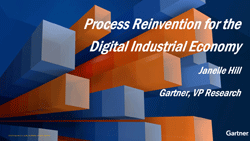
Gartner Outlines Transition to Digital Business
Digital business promises to be a massive disruption to all industries. Practitioners will need to reinvent core operational processes for the digital industrial economy. What are the forces driving digital business disruption? How do you deal with digital business? Janelle Hill shares Gartner’s perspective on Process Reinvention, steps that practitioners should take to capitalize on Digital Business and Business Moments and a sneak preview of major themes that will be a part of Gartner’s BPM Summits in 2014.
Attend this webcast to learn:

To Deliver Business Value, Avoid Paving over Cow Paths
“Yesterday’s adaptations are today’s routines”–Ronald A. Heifetz, The Practice of Adaptive Leadership
I opened an earlier article[1] published in this forum some time ago by setting up the following scenario, which concludes with a simple question:
Imagine yourself as the owner of a business domain within a government agency. Let’s say you’re the Deputy Administrator of entitlement programs in an organization that processes claims for benefits. No matter the type of benefit(s) or entitlement(s) your agency administers, whether loan guarantees, educational benefits, [or] disaster-recovery relief . . ., your business model – at some level of abstraction – is as simple as receiving applications (or claims) for benefits, qualifying them, and dispensing an appropriate response to each . . . of your applicants (or claimants).

Pivoting Through Capability Maps
Most entrepreneurs understand the meaning of a “Pivot”. A Pivot is a change of direction for the entire organization in order to take advantage (or find) an opportunity that expands the company’s business. A pivot can create an atmosphere of what appears to be total chaos and without proper management, can leave a business slogging along instead of soaring higher. However, by understanding the capabilities of your company, capability maps can make pivots more manageable. A pivot is one of the few times where capabilities may become fluid in order to adapt to the new direction. Business architecture usually assumes that capabilities are relatively stable – not so with a pivot.

The Virtual BPM Facilitator – Part 1
A Facilitator helps participants in a group work together toward the meeting objective by providing a meeting structure, engaging the participants, keeping them focused on the content, and remaining neutral himself. A BPM Facilitator is a person who guides a business process improvement (BPI) project, using the same group process skills and behaviors of a generic facilitator but in the context of BPM. So the BPM facilitator needs to know the BPM Methodology, have a structured method of working with BPI teams, be able to coach a Process Owner, and be able to work with the BPI Project Leader toward the improvement targets of the Process Owner. And the Virtual BPM Facilitator needs to do it virtually – not face to face but using telecommunications by phone, by video conference, by Web Ex, or similar tools. That makes the medium a bit more challenging but it’s the reality of today’s global world.

Smarter Systems: Applying Decision Management
All systems are active participants in business decision making to some degree.
The logic coded into business systems allows a level of ‘smartness’, and this is then amplified by the decision logic used by users – resulting in smart business operations. So, if we want to make the entire business operations smarter, we need to focus on decision making across systems and their users. Business Decision Management seeks to explicitly define and improve operational decisions; and to automate them through targeted deployment of sophisticated decision management technologies like Business Rules Management, Advanced Analytics and Optimization.
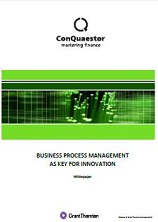
Business Process Management as Key for Innovation
The environment in which organisations find themselves is and remains in a state of flux; markets are volatile, customers are able to manage on their own and are more articulate than ever and it’s impossible to imagine society today without social interaction. In addition, organisations are faced with more (new) legislation than they have ever experienced before and there is unprecedented pressure on margins and profit.
These developments are forcing organisations to change and within the changes taking place the demand for innovation is becoming increasingly greater. Why is that? Simple: to add value both internally and (preferably) externally. The question is whether and, if so, how a discipline such as Business Process Management (BPM) can and must contribute towards innovation.
This whitepaper answers that question by addressing the following subjects:

Business Architect, Enterprise Architect and Business Transformation
Businesses are under constant challenge to deliver growth and profitability. Business process improvements and other enterprise quality initiatives are vital for the enterprise to do more with less, but they are not sufficient. When businesses feel there is opportunity for transformation, they may engage a business architect. Many organizations do not have the benefit of established architecture processes and architecture governance for the enterprise, which makes the task of the business architect even more difficult. It becomes incumbent on the business architect to educate and navigate stakeholders through architectural aspects of business transformation.

Building a Process Catalog: Final Steps
This is the final article in my series on building a process catalog for the organization in which I work. For reference and context, you can find the first three articles at these links: Building a Process Catalog: The Journey Begins; Building a Process Catalog, The Ongoing Journey; and Building a Process Catalog: Moving Ahead.
As we have wrapped up the calendar year, the Process Catalog that we began last October finally can be completed. Below is a brief recap of the stages we’ve gone through to get the catalog to the current state.

The Role of Decision Modeling in Business Decision Management
Decision Management, Business Decision Management as we call it here at the BPMInstitute.org, is both an approach and a technology stack for automating and improving business decisions.
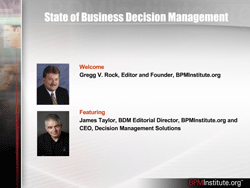
State of Business Decision Management & Decision Modeling
Business Decision Management is an approach that allows you to take advantage of powerful technologies, particularly business rules management systems and predictive analytics. Applying decision management allows you to develop agile, analytic and adaptive systems that deliver significant business ROI. In this webcast, hear James Taylor, CEO of Decision Management Solutions and Editorial Director for Business Decision Management at BPMInstitute.org, introduce Business Decision Management. He’ll outline key concepts and technologies describe the kinds of decisions to focus on, outline the value proposition for business rules management systems and introduce the new Decision Model and Notation standard and its role in developing decision models alongside your process models.
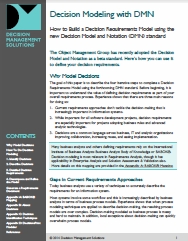
Decision Modeling with DMN
How to Build a Decision Requirements Model using the new Decision Model and Notation (DMN) standard
The Object Management Group has recently adopted the Decision Model and Notation as a beta standard. Here’s how you can use it to define your decision requirements.
Why Model Decisions
The goal of this paper is to describe the four iterative steps to complete a Decision Requirements Model using the forthcoming DMN standard. Before beginning, it is important to understand the value of defining decision requirements as part of your overall requirements process. Experience shows that there are three main reasons for doing so:

Critical Success Strategies for New Change Management Leaders
You have been promoted to a new change management position. You’re not sure of how you are going to meet the challenges ahead. All you know is that all eyes are on you and you only have a short time to get your strategies in place and operational. The actions you take will largely determine whether you succeed or fail. You will either move Change Management support forward or lose this opportunity to show its longer term value and yours.













